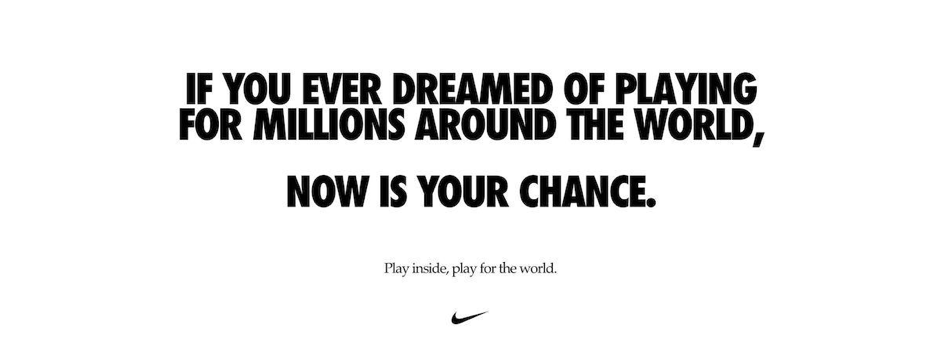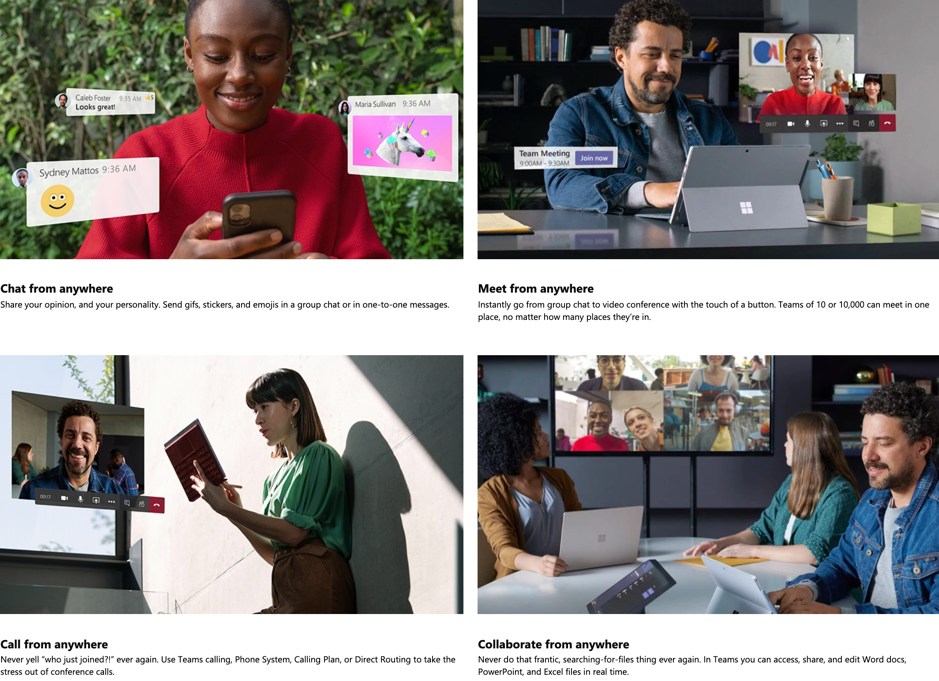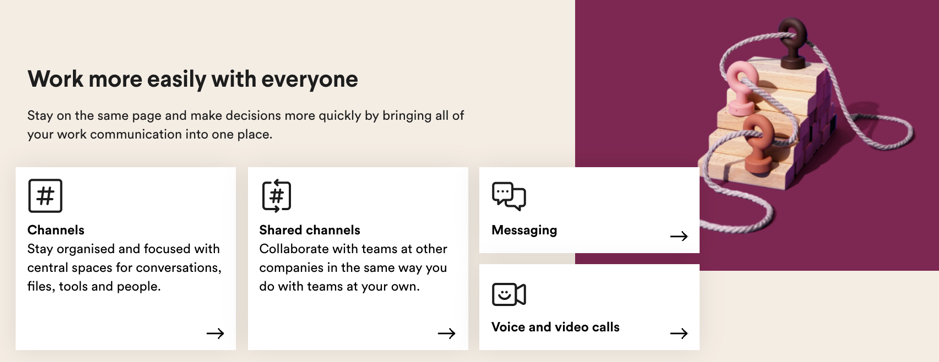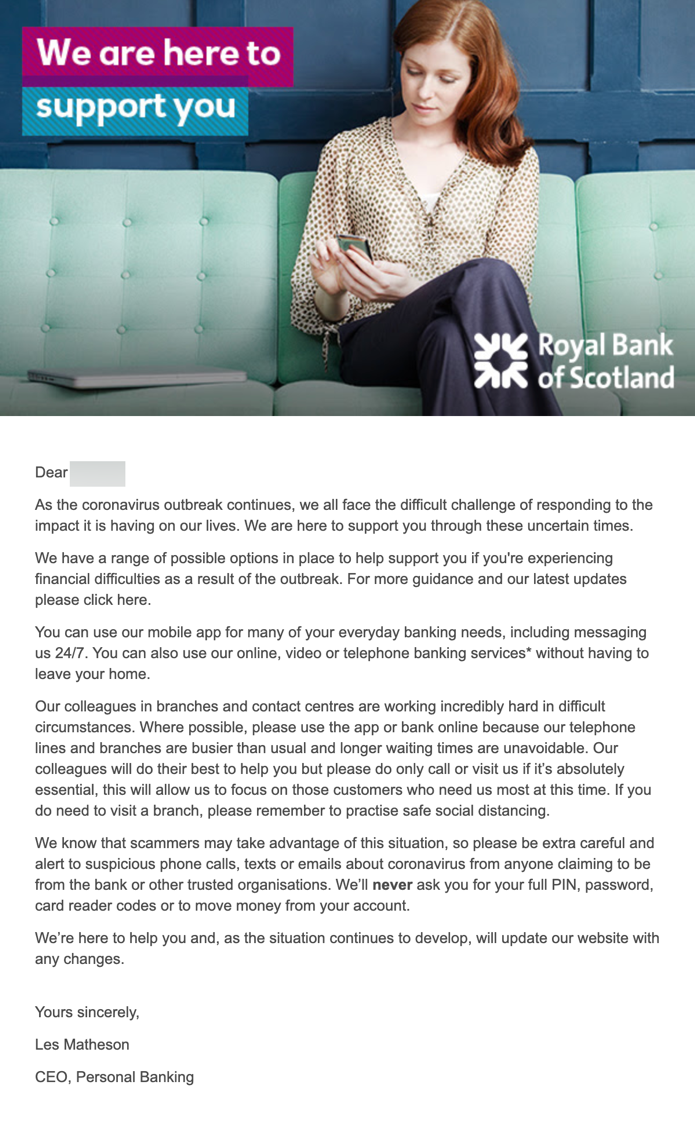The current pandemic crisis is putting a strain on the economy, redefining priorities, and forcing brands to adjust their communication.
Everything has changed overnight with stock market crashes, closed businesses, paused advertising budgets, lockdowns, and food shortages now the norm.
In a crisis like this, when employees and clients are in quarantine or self-isolating, communication becomes more important than ever.
In this guide, we’ll examine why brands should adjust their communication, take a look at brands who are handling the situation well, and then look at how you can adjust your brand communication.

Manage all your social media accounts in one place.
Craft, schedule, & auto-post content to all your social channels, then track analytics and manage interactions from a single, easy-to-use dashboard.
Why Brands Should Adjust Their Communication
With all the changes happening as a result of the pandemic, you can’t afford to stand still. Here is why you need to adjust your brand communication:
1. Protect your brand image
People will remember how you communicated during the pandemic. If you get your messaging wrong, then your brand image will be tainted. Don’t jump aboard the bandwagon for the sake of it. If you don’t have anything positive to contribute to the conversation, remain silent.
2. Keep in touch with your audience’s priorities
During the pandemic, your audience’s priorities will change. And so should your content. It’s time to review the content and campaigns you had lined up in your calendar, and decide what stays, what goes, and what needs creating.
3. Minimize customer frustration
People will have questions they want answering, so you need to be available on your support channels to listen and help. For example, travel and events will be canceled, and refunds will need to be processed, so you need a smooth process to handle that.
4. Maintain trust
The “know, like, and trust” factor is critical as you build marketing campaigns to convert prospects into customers. Now, more than ever, you need to keep those customers and make sure you don’t break that hard-earned trust. Position your brand as dependable even in the hardest of times.
However.
While adjusting your brand communication is important, there’s a time and a place for it, so:
5. Don’t overdo it
You’ve probably experienced a flurry of emails from various companies, some of which you hadn’t heard from in ages.
While it’s OK to send updated service messages, like, “Here’s how to process refunds quickly and smoothly,” and solidarity messages, such as, “We’re in this together,” you don’t need to send emails for the sake of it.
As Fast Company puts it, “The completely random, we-just-happened-to-have-your-email-thanks-for-buying-our-cat-food-three-years-ago message,” is totally out of place and unwanted.
Examples of Brands Who Are Handling the Situation Well
In trying times, it’s always good to focus on the positives. So here are five brands that are handling the situation well.
1. Lush
Lush in the UK now offers a free handwashing facility to help prevent the spread of coronavirus. Members of the public passing its shops can pop in to use the sinks and soap and are under no obligation to buy anything.
Lush’s chief executive, Mark Constantine, said:
“The simplest thing you can do not to get a virus is to wash your hands regularly. So we’re saying people can come in off the street and wash their hands in our place. We’ve got loads of soap and plenty of hot water.”

Credit:The Guardian
2. Nike
Nike has created a great message and a clever new slogan to encourage budding athletes, and people in general, to perform social distancing:
“If you ever dreamed of playing for millions around the world, now is your chance. Play inside, play for the world.”

You can see the message when you land on the Nike homepage and social media. Plus, they’re also sharing stories of athletes who are practicing it from home:

3. McDonald’s
McDonald’s in Brazil has split the famous golden arches of the company’s logo to promote social distancing:

“Agency DPZ&T teamed with McDonald’s Brazil to reconceive the Golden Arches in pulled-apart form to encourage consumers to keep each other safe through social distancing. According to the shop, the move is meant to convey the idea that we are “separated for a moment so that we can always be together.”
4. Joe Wicks The Body Coach
With schools closed, Joe Wicks the Body Coach launched his P.E. with Joe workouts, designed especially for kids of all ages to exercise in their homes.
The first live streaming started at 0900 UK time, and 26 minutes later Mark Di Stefano tweeted there were 800,00 viewers:
Holy mother. The Joe Wicks lounge room workout has nearly 800,000 viewers right now – he only has 1.16m subscribers. YouTube's algorithm going into overdrive. pic.twitter.com/rklIJn5HQO
— Mark Di Stefano (@MarkDiStef) March 23, 2020
Joe’s YouTube channel previously had 1.16m subscribers, but has since grown along with the number of views and likes:
5. Simon’s Cat
The adorable cartoon character Simon’s Cat provided his “Guide to Self Isolation” and asked people to share their tips:
Step-by-Step Plan to Adjust Brand Communication
Follow this step-by-step guide to adjust your brand communication during the pandemic.
Step 1: Define your business goals and priorities
Here are six business goals and priorities you may want to address:
1. Organization survival
To adjust to the new challenges and constraints, you should optimize your processes and cost structure, so you can preserve the integrity of your company and survive the crisis.
2. Damage control
Your crisis management team needs to assess whether they are doing everything possible to manage the crisis, protect the lives of employees and customers, and maintain or restore public confidence.
3. Manage churn
Companies often neglect churn management and focus on growth with new customers. But now, more than ever, you need to identify which customers are most likely to leave and take proactive steps to ensure they stick around.
For example, Grammarly sends weekly activity emails to encourage its users to continue using the app:

4. Service continuation
During the pandemic crisis, you’ll need to assess which parts of your business can continue to operate, and which have to be modified or temporarily closed. Once you’ve reached a decision, make sure you inform staff and clients which services are affected and how you’ll be operating.
5. Social impact
With people in lockdown and isolation, you’ll need to evaluate the social impact on your business. For example, how are you going to assess and maintain the welfare of your team while they’re working from home or taking enforced leave?
6. Growth
With everyone affected by the pandemic, you’ll need to decide on your growth strategy. Are you going to hold the fort until it’s over? Or are you looking for ways to adapt to the challenges?
Now is a good time to take stock and see what other skills and resources you have so that you can offer different services, or at least tailor your services to the current needs. For example, if you’re a bricks-and-mortar business like a gym or fitness studio, you could offer classes via online streaming.
Step 2: Update your editorial line
A crisis causes people’s perceptions of life and business to change. What worked previously, might not be appropriate any longer. Here are four areas to consider when updating your editorial line:
1. Topics to be covered and avoided
During the crisis, you need to be clear about which topics to cover and avoid.
It’s not the time for marketing fluff. People want useful information.
Ryan Ku, Head of Strategy and Brand Innovation at San Francisco-based agency Eleven, advises:
“The takeaway for brands is to be helpful, relevant, informative, constructively distracting, or authentically compassionate.”
2. Tone
Right now, you need to ensure the tone of your messaging is correct. While it’s good to inject some humor, you need to be careful that it’s not going to upset parts of your audience. And it’s fine to show empathy and kindness, as long as it’s sincere.
The key is to listen to what your audience is saying, and make sure your copy and tone reflects that.
”Already, we’ve seen companies like Cadbury, KFC, and others have to pull ads or change their media plans because their messages seem to appear tone-deaf or insensitive given the current environment.”
3. Voice
Decide who is going to speak on behalf of your brand. Otherwise your social media team will be telling a different story from your brand team, who’ll be sending a different message to your CEO.
Make a strategic and holistic decision on who and how your message will be delivered.
4. Publishing frequency
Knowing when to stay silent as well as when, and what, to say, is also important. Seriously, if you don’t have anything to say or add to a conversation, then don’t say anything.
Check your regular publishing frequency and see if it needs to increase or decrease. Each brand is different and needs to adjust accordingly.
Step 3: Design a remote-friendly workflow
If your company was 100%, or even 50% office-based before coronavirus, then you’ll have to adapt to a remote-working model. Here are a few apps, tools, and tips to help.
1. Communication
You’ll need to consider which tools you use to keep communication channels open while employees are working from home.
For example, as the UK AutoTrader staff are all working remotely during the quarantine, they used Microsoft Teams Live Event so that colleagues could hear from different areas of the business through short 15-minute lightning talks.
Other video conferencing tools include Zoom, Skype, and Google Hangouts Meet. All these tools are suitable for different-sized meetings, including:
- 1-2-1 meetings
- Daily team meeting or Stand-ups
- Weekly “all-hands” company meeting
2. Collaboration
Working remotely still requires colleagues to collaborate on projects and tasks. For example, if you’re updating your social media calendar, then you may need copywriters and graphic designers to collaborate on new material.

Microsoft Teams and Slack are both excellent tools for workplace chat messages and collaboration.

The Loomly and Slack integration allows you to receive notifications in Slack when a collaborator in Loomly:
- Requests approval, approves, requires edits, schedules, or publishes a post.
- Assigns a post to you.
- Leaves a comment or @mentions you.
Similar to the Slack integration, the Microsoft Teams integration allows you to receive Loomly notifications in your selected workspace channel.
Further reading: Managing remote work with Slack & Your guide to working remotely in Slack.
3. Project Management
You’ll need a cloud-based project management tool so everyone can see what their current tasks are and the overall project status. Consider using Asana, Basecamp, or Trello if your existing software is not remote-friendly.
Step 4: Produce a new editorial calendar
Based on Steps 2 and 3, you’ll need to update or produce a new editorial calendar. Here are a few examples of topics to cover as a brand in times of crisis:
1. How to work remotely
People suddenly want to know how to work remotely. You can share tips based on best practices from companies who are used to working remotely, plus your brand’s experience of adapting to remote work. For example, here’s how the BBC wrote their article about working from home.
2. Communicate about service disruption and continuation
People want to be kept informed of what’s happening. Most businesses are affected in some way or another, so use different channels – social, web, email – to communicate clearly to your customers.
Here are some examples:
- On Twitter, Southwest Airlines and JetBlue posted updates to keep passengers informed:
We’ve created a resource for Customers to find the most updated travel information on COVID-19: https://t.co/HeN84YXsmw pic.twitter.com/QbBr2dUX4V
— Southwest Airlines (@SouthwestAir) March 5, 2020
We know many of you have questions about your upcoming travel plans. Due to the high volume of requests, please reach out to us only if your flight is scheduled within the next 72 hours. As always, you can manage your trip at https://t.co/QJ1boQBM7L or on the JetBlue app. pic.twitter.com/VSFdbEbwKy
— JetBlue (@JetBlue) March 18, 2020
- On Nike’s homepage, they have a scrolling banner message, which includes updates on delivery times:
“Due to delivery challenges in certain areas, your delivery might be delayed. Please visit get help.”
- They also have a dedicated landing page regarding coronavirus.
3. Updated offers
If you have an ecommerce store, you might be running special offers, including free shipping or discounts. Other brands may want to offer premium content for free. For example:
- Nike promoted a bumper package with 25% off, plus free shipping, and 60-day free returns:

- The Financial Times removed its paywall for coronavirus news updates:
You asked, we answered:
The @FinancialTimes coronavirus death & case trajectory trackers are now
FREE TO READ
outside the paywall: https://t.co/JxVd2cG7KI
In this morning’s update, the US has gone above 470 deaths, bringing it just behind where Iran was at the same stage. pic.twitter.com/NBA7FMYlmC
— John Burn-Murdoch (@jburnmurdoch) March 23, 2020
4. Help in the community
Another popular topic during the pandemic is to turn our thoughts to the wider community. Brands can get involved in different ways.
For example, as all sports events are postponed, Aston Villa Football Club asked their fan base for a different kind of support. Instead of cheering on the team at football matches, they asked fans to support the elderly and vulnerable in their community:
Look after yourselves and each other, Villans.
#MondayMotivation #AVFC pic.twitter.com/Y5ddY2e7EW
— Aston Villa (@AVFCOfficial) March 23, 2020
5. Inspiring things to give hope in challenging times
People want to know about acts of kindness as they can serve as inspiration for others to do something kind.
Check hashtags like #ViralKindness and #InThisTogether on social media for some inspirational content.
For example, here’s a heartwarming story of the Spanish police serenading the locals during the lockdown:
Local police in Spain start playing music to locals during the Coronavirus lockdown.
A wonderful heartwarming moment.#ViralKindnesspic.twitter.com/NpFhi1DpNr— WWFP (@WorldwideFP) March 22, 2020
6. Fun things to lighten the mood
With news programs and social streams dominated by the numbers of coronavirus cases and deaths, it’s worth sharing some fun things to lighten the mood.
For example, here’s a raccoon giving us some hand washing tips:
This raccoon is giving us some hand washing inspiration! pic.twitter.com/qlj11nKroH
— People (@people) March 24, 2020
Step 5: Fine-tune your support guidelines
With all the changes to businesses, you’ll most likely have to adapt your support guidelines too.
1. Specific requests
You might be overwhelmed with the volume of support requests you have to provide. If so, some helpful tips on how customers can find advice quickly might be appropriate.
For example, the RBS emailed with advice to use their website and banking apps as there were longer than expected waiting times for telephone banking and in-branch service:

2. Share new policies
If you’ve changed your policies or Terms & Conditions, then let customers know. Use multi-channels to ensure your message gets received.
For example, travel company Trainline emailed with some updates on refunds for Advance tickets that were previously non-refundable:

3. Show empathy
It’s a difficult time for everyone, which means staff have to be empathetic. Even if they’re restricted in what they can offer, they can listen and respond.
4. Be kind
Show some genuine kindness by offering to help in some way. Go the extra mile to support your customers.
Step 6: Measure the response
Finally, with all these changes, it’s important to measure how well your customers are reacting.
1. Qualitative (sentiment, feedback, comments)
Check the quality of responses to social media posts with the sentiment people express in the comments and feedback. Are they pleased and happy with your updates? Or are they angry and expect more?
2. Quantitative (KPIs)
Check your KPIs to see how people are engaging with your messaging. Do you see an upward or downward trend?
3. Rinse & repeat
If everything is working well, then you can continue along the same lines. If you’re experiencing a negative response, then you’ll need to adjust your brand communication.
Brand Quarantine in a Nutshell
Let’s wrap up the brand quarantine advice:
- Make sure you adjust your communication, or you risk damaging your brand and alienating your customers.
- Take note and learn from other brands who are handling the situation well.
- Follow the step-by-step plan to adjust your communication during the pandemic crisis.
- And remember, brands that keep a calm voice and maintain open communication channels with all their stakeholders will emerge stronger.



